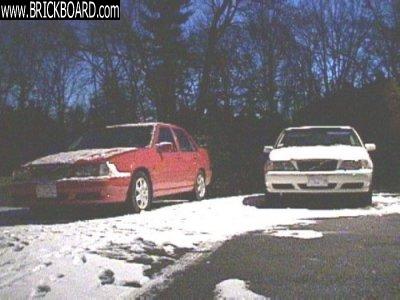|
There may be other factors in play here.
Refrigeration compressors are somtimes designed to avoid overpressurization and damage to the compression chamber. For example, if there is too much refrigerant in the loop, liquid refrigerant may be getting into the compressor, causing it to "short cycle", where it starts, senses that there is too much pressure, then shuts off. This is common with commerical and home systems when the expansion valve fails. Liquid refrigerant gets to the compressor, and since the liquid in much more incompressable the the vapor, it causes the compressor to shut off. There is typically an electric circut that senses that the compressor is drawing too much current, and opens the relay powering the compressor.
HOWEVER, the Volvo systems may not have this feature in the control systems, in which case, there may be other issues.
If there is a leak in the system, it just doesn't allow refrigerant to escape, it may also allow water vapor in. If this happens, and the vapor condenses, there may be water in the system. A complete purge and fill may solve this.
I'm not a Volvo mechanic, but I do understand the vapor compression cycle. R-134a runs at much higher pressures than R-12 or R-22 (read: more dangerous to people and components), so if the compressor is cycling, there is a good chance that its trying to compress somthing that its not able to.
|

